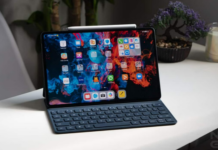Are you trying hard to keep motivating your students but still no good results?
School classroom has an effective and positive nature that put students together from a different environment with several personalities and capabilities. Being a good teacher thus requires the execution of innovative and creative teaching strategies to reach every student’s needs.
Whether you have been teaching for ten months or years, sometimes you are unable to figure out which teaching strategies will keep the students interested.
If students are not attentive and only present physically, then how will they grab any of the knowledge that you are providing them. However, there is no ‘single formula fits all’ solution as a teacher.
Keeping in mind, look below the five teaching practices that you can implement to motivate your students:
Think As From the Minds of Students
As a teacher, you know what you are conveying but are you sure you are doing it right?
For that, think as similar to your student’s mind and try to visualize the boring academic concepts. You can make students understand the concepts by taking real-life examples.
You can also include drawings on a whiteboard in the student classroom that encourage students to take active participation. Adding audio clips, videos, and display photos are another great ideas to engage your students for a more extended period.
Learning in a Group
Learning in a group encourages students to work together, express their ideas, and respond actively to others. Each student’s different abilities and qualities when implemented in a group, it will bring out students with more self-confidence. This technique also boosts their communication and imagination skills, which are imperative throughout their life.
Cooperative learning is most useful, let’s say in resolving mathematical puzzles, evaluating scientific experiments and participating in short drama sketches.
Encourage Students to Ask Question
Make your students feel free to ask questions that come to in their minds. This way, your students will become more independent and better learners.
Moreover, if you encourage your students to ask their confusion and what they think of their own ideas, improve their answering-skills. It also helps them to attain a better understanding of academic concepts.
It can be any inquiries, be it calculative or theoretical-based let’s say “Is the square of every number always an even number?”
However, their questions can be subjective, so you have to be more patient while answering. Let’s say “Why February has 28 or 29 days?”
Pick Out Every Student’s Unique Quality
Each student has some uniqueness, find out that and allocate tasks based on that unique factor. This way, every student will be occupied in some functions or the other.
These activities also make students feel more confident in academic responsibilities.
Let’s say, crafting, art, managing workstations, creating worksheets, etc. Moreover, it will be easy for you if any student lacks in their assigned tasks.
Use Digital Methods
We, as humans, tend to learn better while visualizing, especially in the present digital world.
Teaching through projectors and tablets help students to look at the images and video clips and understand better.
This is the most productive way of learning as you are using the latest technology that acquires better engagement of students.
If you use such combinations of teaching strategies, you can mark students’ different learning patterns and academic capabilities as well as make your classroom an energetic and motivational space for students.




